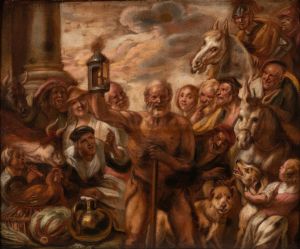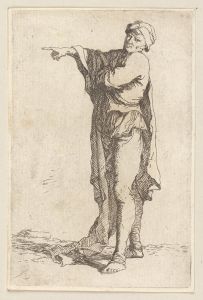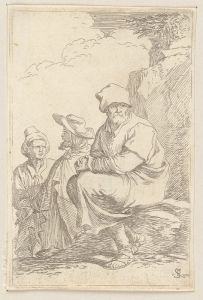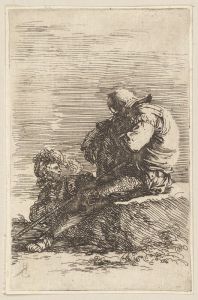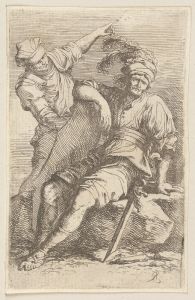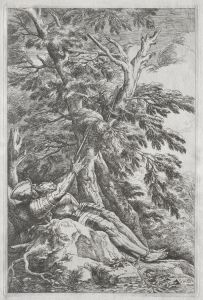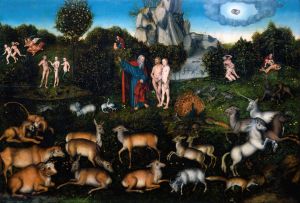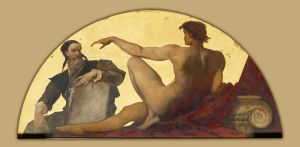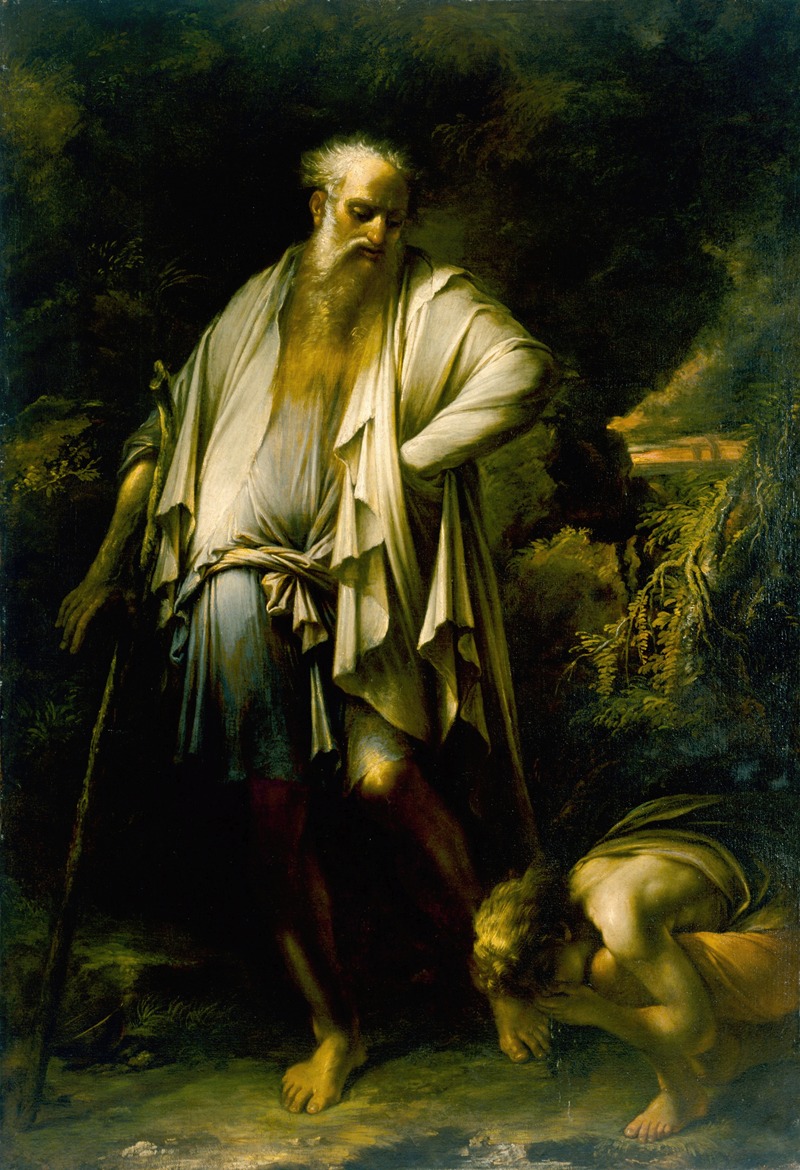
Diogenes Casting Away His Cup
A hand-painted replica of Salvator Rosa’s masterpiece Diogenes Casting Away His Cup, meticulously crafted by professional artists to capture the true essence of the original. Each piece is created with museum-quality canvas and rare mineral pigments, carefully painted by experienced artists with delicate brushstrokes and rich, layered colors to perfectly recreate the texture of the original artwork. Unlike machine-printed reproductions, this hand-painted version brings the painting to life, infused with the artist’s emotions and skill in every stroke. Whether for personal collection or home decoration, it instantly elevates the artistic atmosphere of any space.
Salvator Rosa's painting Diogenes Casting Away His Cup is a work that reflects the philosophical ideals of the ancient Greek philosopher Diogenes of Sinope, a prominent figure in the Cynic school of thought. The painting is believed to have been created during the 17th century, a period when Rosa was active as a painter, poet, and printmaker in Italy. Known for his dramatic and often unconventional subject matter, Rosa's works frequently explored themes of philosophy, morality, and the human condition.
The painting depicts a well-known anecdote from the life of Diogenes. According to historical accounts, Diogenes, who advocated for a life of simplicity and self-sufficiency, once observed a boy drinking water from his hands. Realizing that even a cup was an unnecessary possession, Diogenes discarded his own cup, declaring that the boy had taught him a lesson in minimalism. This act symbolized his commitment to living a life free from material excess and his disdain for societal conventions.
In Rosa's interpretation of this story, Diogenes is shown in a rugged, natural setting, consistent with the philosopher's ascetic lifestyle. The composition emphasizes the philosopher's solitary existence and his rejection of material wealth. Diogenes is often portrayed in tattered clothing, with a humble demeanor that underscores his philosophical ideals. The discarded cup, a central element of the narrative, is typically included in the scene to highlight the moment of realization and action.
Salvator Rosa's artistic style is characterized by dramatic contrasts of light and shadow, a technique known as chiaroscuro, which he employs to create a sense of depth and intensity in his works. His use of earthy tones and dynamic brushwork further enhances the emotional resonance of the scene. Rosa's ability to convey complex philosophical ideas through visual art is evident in this painting, as he captures both the simplicity and profundity of Diogenes' actions.
While the exact date of the painting's creation and its current location are not definitively documented, Diogenes Casting Away His Cup remains an example of Rosa's engagement with intellectual and philosophical themes. The work reflects the broader cultural interest in classical antiquity during the Baroque period, as well as Rosa's own fascination with figures who challenged societal norms.
Salvator Rosa's contribution to the art world extends beyond his paintings; he was also a poet and satirist, known for his rebellious spirit and independent approach to art. His works often defied the conventions of his time, earning him a reputation as a maverick in the Baroque art scene. Diogenes Casting Away His Cup exemplifies Rosa's ability to merge narrative, philosophy, and artistic innovation into a cohesive and thought-provoking composition.






